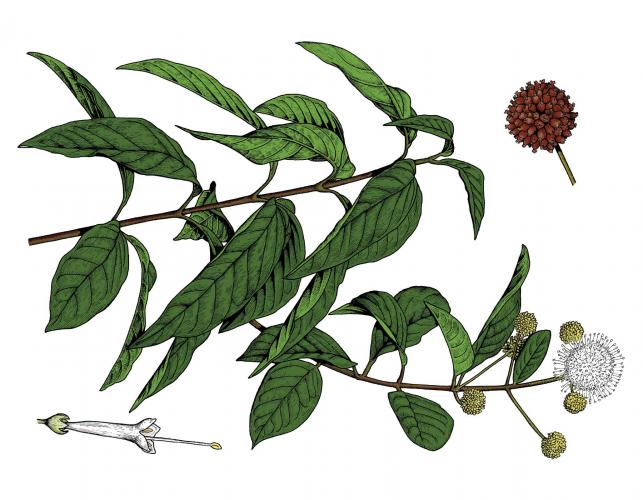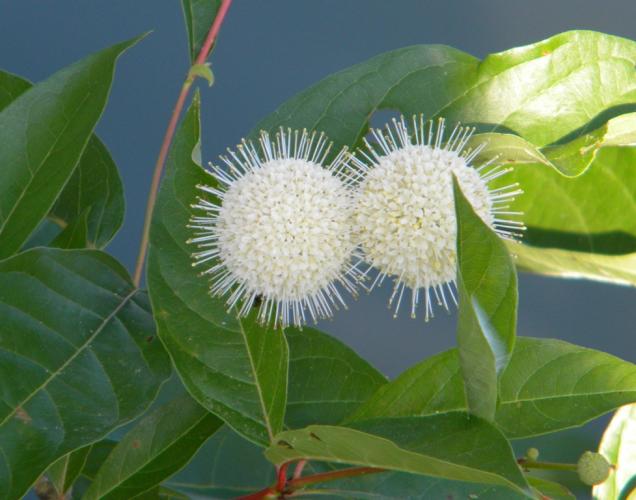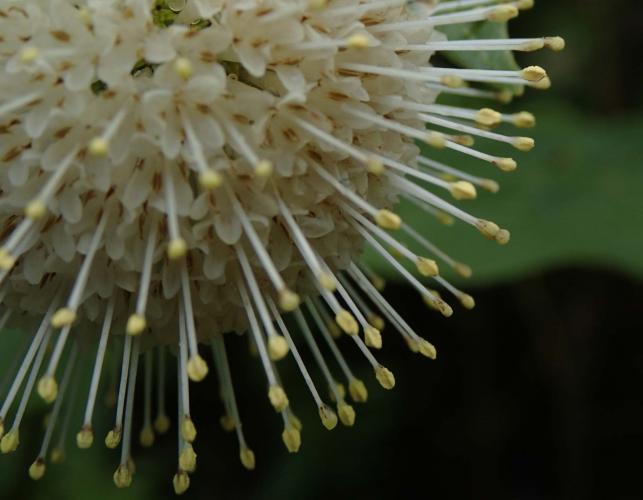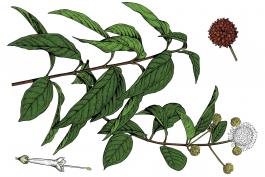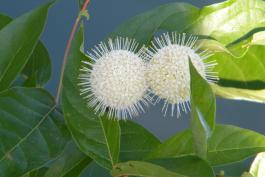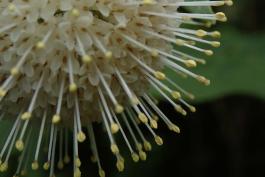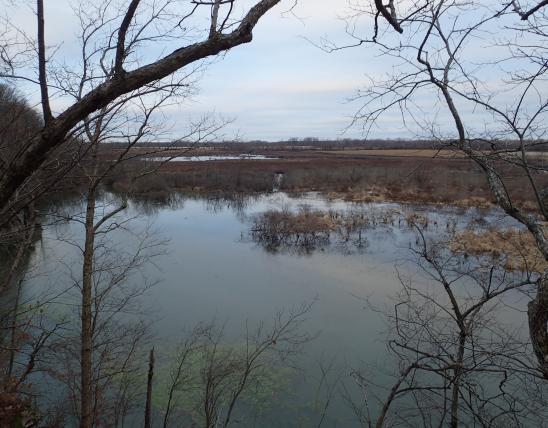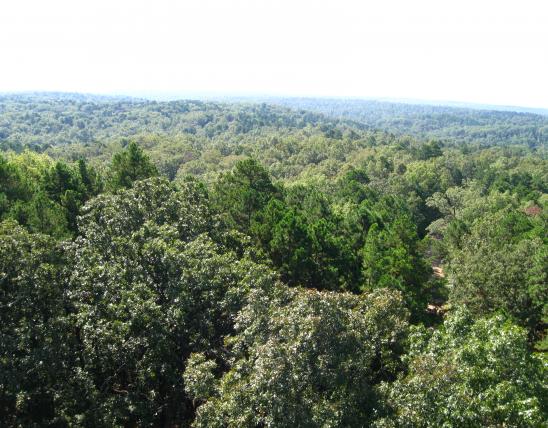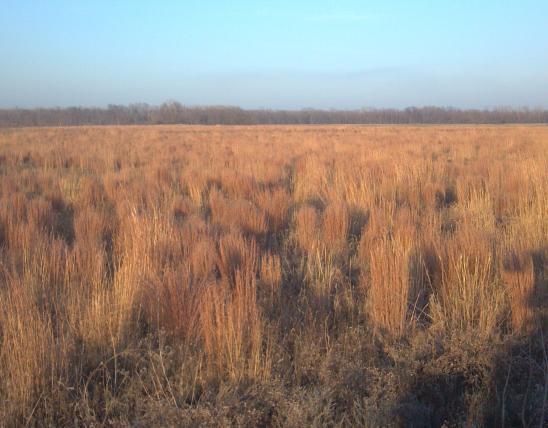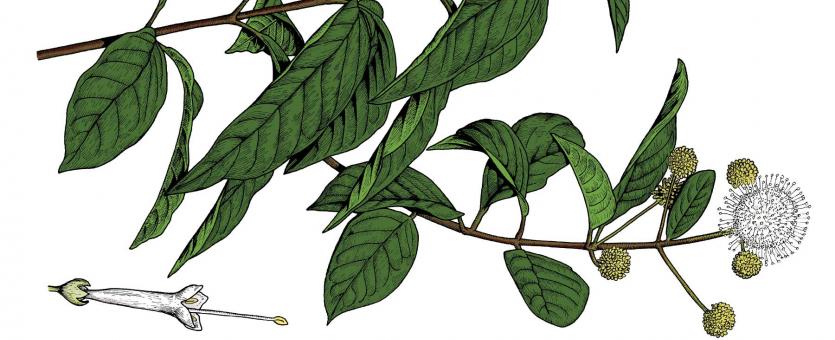
Buttonbush is a large multistemmed shrub or small tree, growing in low areas, often swollen at the base.
Leaves are opposite but more commonly in whorls of 3, blades 2–8 inches long, oval or lance-shaped, tip pointed, margin lacking teeth; dark green, smooth above, paler with a few hairs along veins beneath. Leaf stalk smooth and stout.
Bark is thin, gray to brown, later with flattened ridges and deep grooves.
Twigs are dark reddish-brown to gray-brown, shiny, smooth.
Flowers June–September, in fragrant, ball-shaped clusters 1–1½ inches wide, on stalks 1–3 inches long; individual flowers minute, 4-petaled, white, with protruding styles. The floral clusters arise from upper leaf axils and at stem tips.
Fruits September–October, a round cluster of reddish-brown, dry, pyramidal nutlets. Pods remain for some time before splitting open.
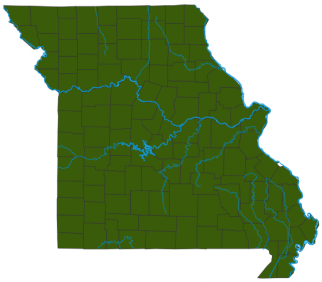
Habitat and Conservation
Human Connections
Ecosystem Connections
